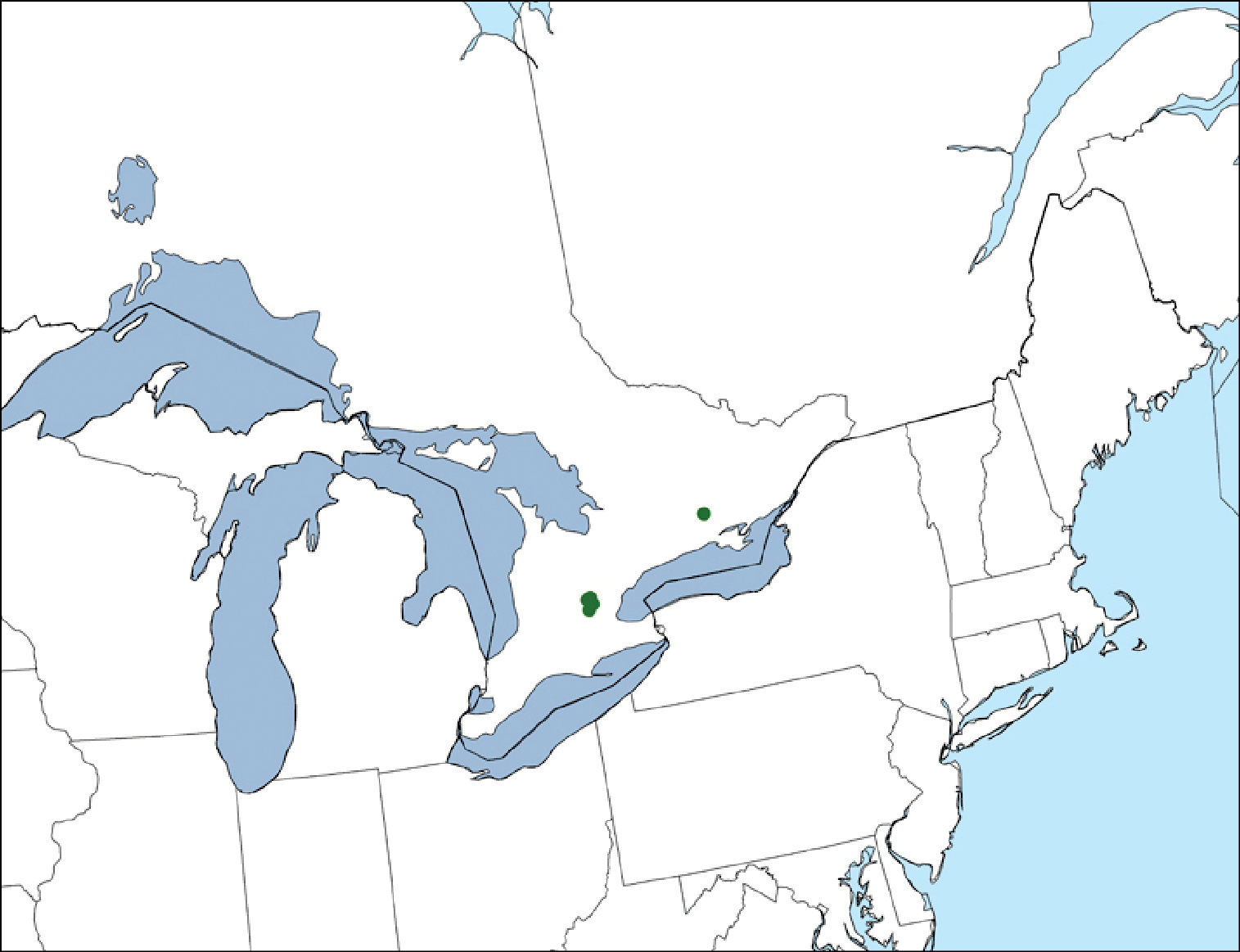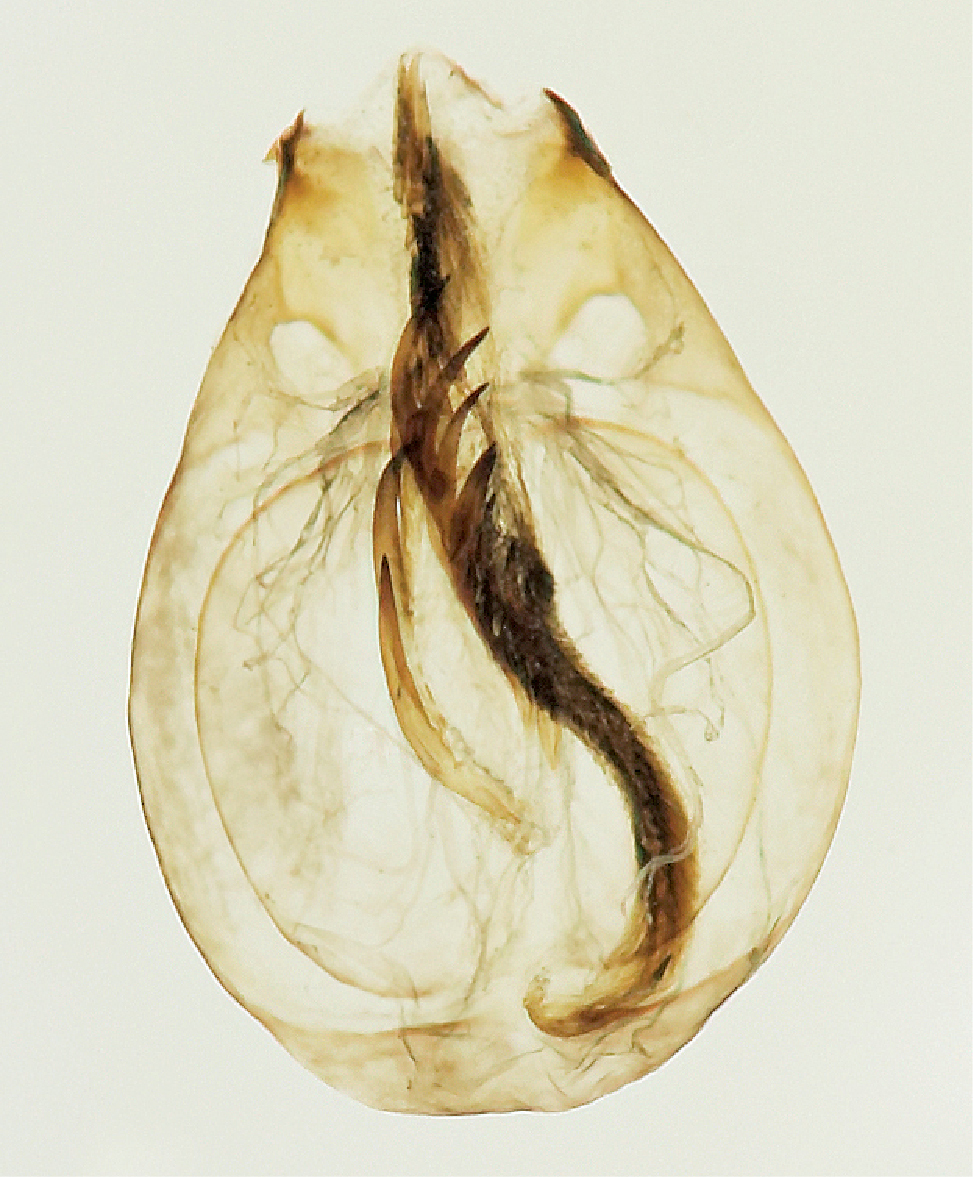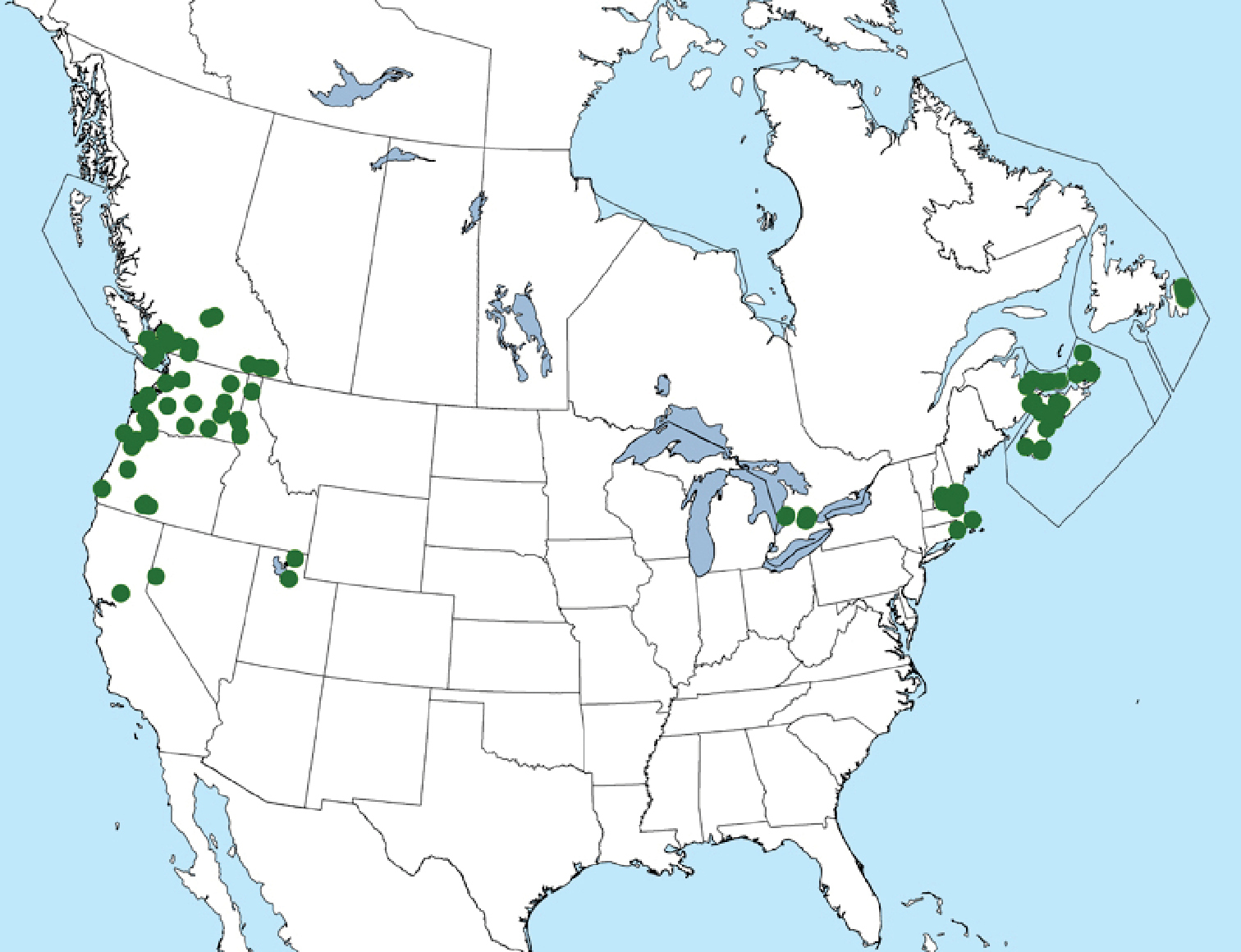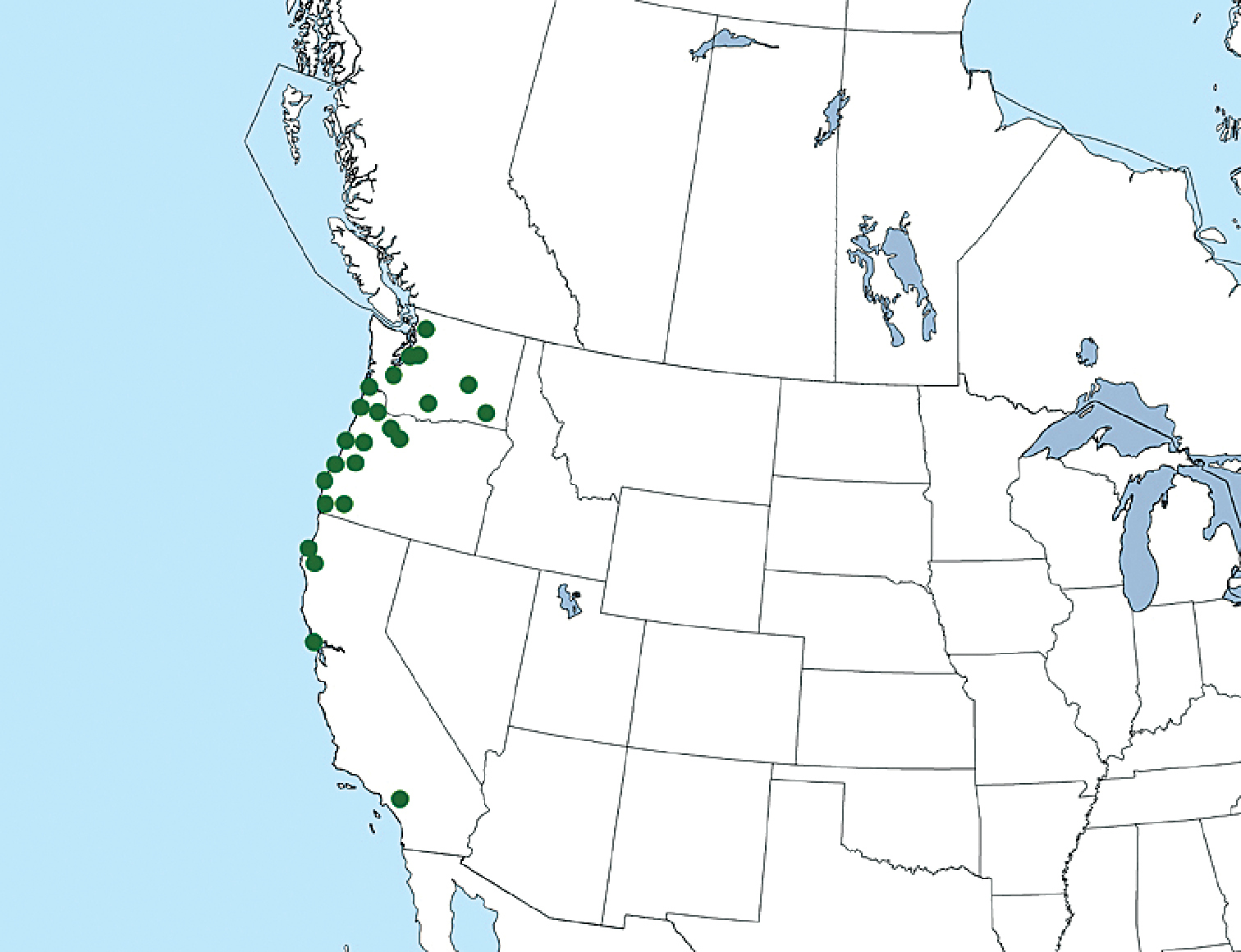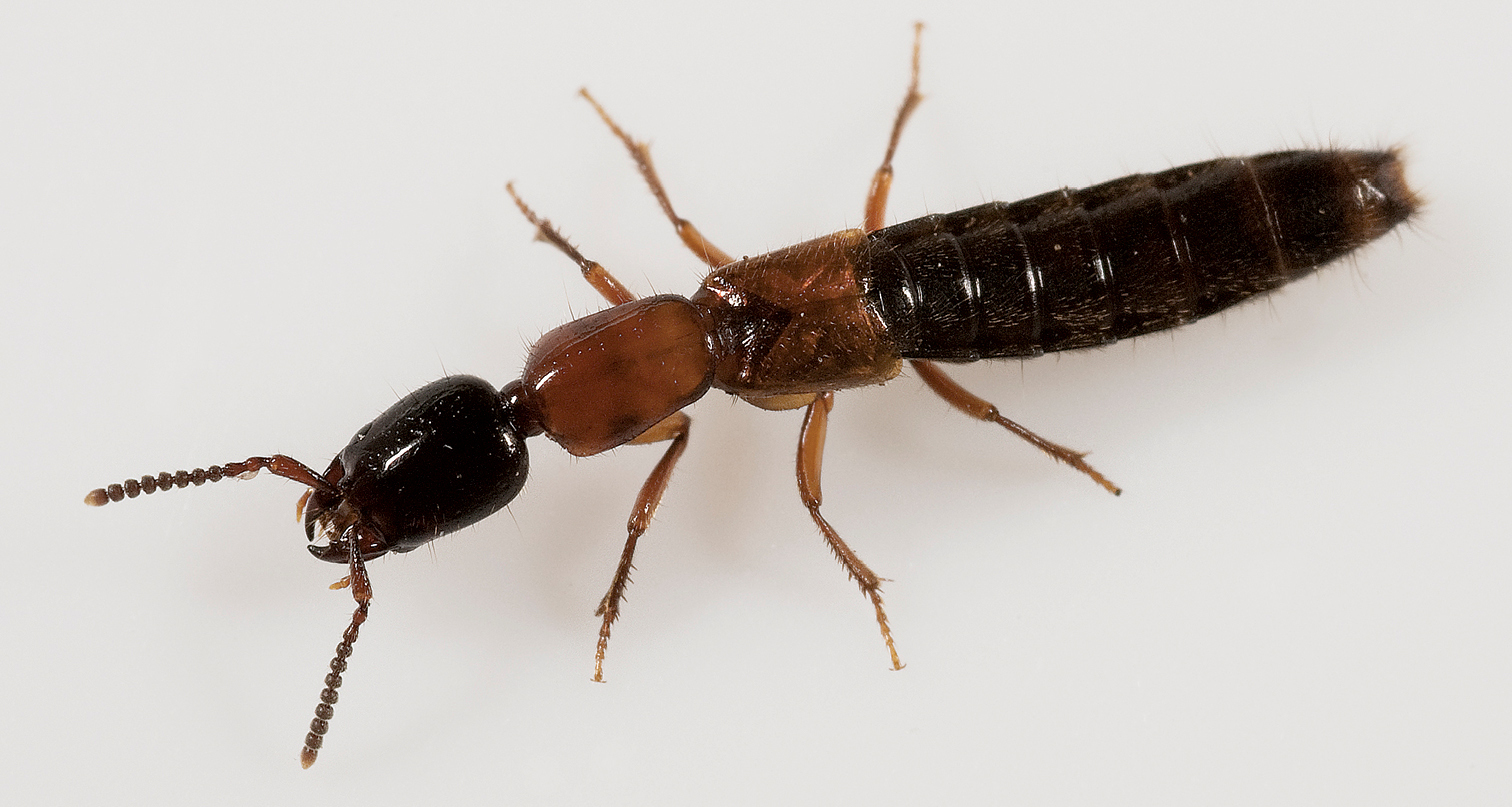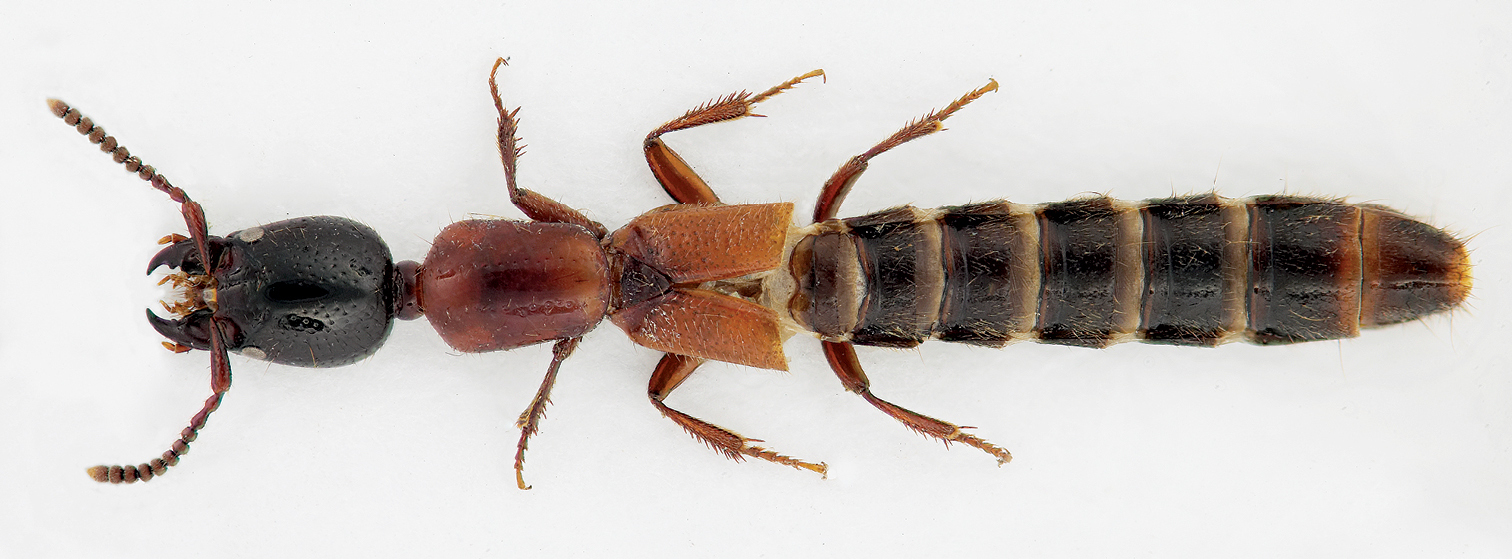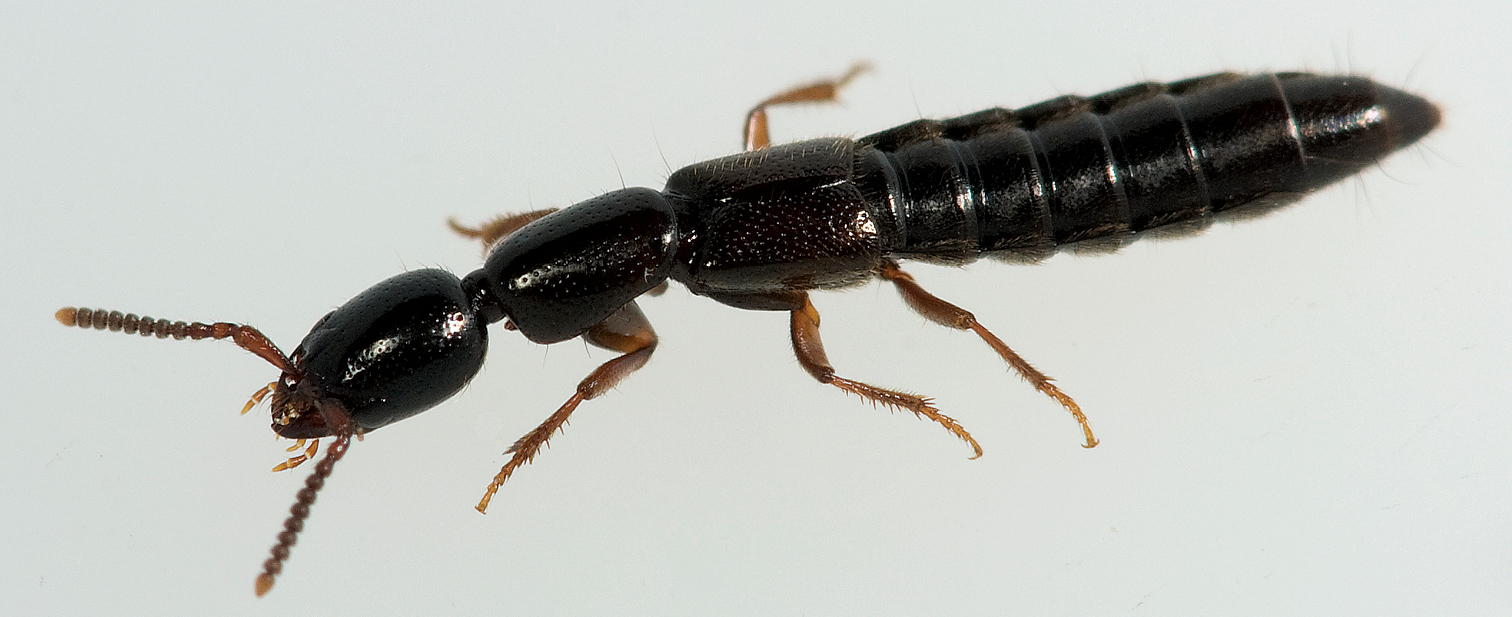(C) 2010 Adam J. Brunke. This is an open access article distributed under the terms of the Creative Commons Attribution License, which permits unrestricted use, distribution, and reproduction in any medium, provided the original author and source are credited.
For reference, use of the paginated PDF or printed version of this article is recommended.
New distributional and bionomic data are provided for species of the genus Xantholinus in North America. Xantholinus elegans (Olivier, 1795) (= Xantholinus jarrigei Coiffait 1956) is recorded from North America for the first time, based on specimens collected in Ontario, Canada from 2007-2010. The armature of the internal sac of the aedeagus in situ is illustrated to aid in identification. Xantholinus linearis (Olivier, 1795), known previously from the Maritime Provinces of Canada and the eastern United States, is newly recorded from Ontario. Xantholinus longiventris Heer 1839 is still only known from western North America. A key is provided to allow recognition of all three species.
exotic, Coleoptera, Xantholinus elegans, Xantholinini
The genus Xantholinus Dejean (Staphylininae: Xantholinini)
is a diverse, mainly Palearctic group and contains several species
that prefer open, disturbed areas, where they often dominate the
staphylinid assemblage (
Recent collections and surveys in Ontario have resulted in the recognition of one additional species in North America and a range extension for Xantholinus linearis. We here summarize all available data for Xantholinus species in North America, present distributional maps, and provide a key for identification of the species known from the continent.
Material and methodsThe aedeagus of Xantholinus elegans (Olivier, 1795) was prepared for examination as in
ACPE Agriculture and Agri-Food Canada, Prince Edward Island, Canada (Christine Noronha)
CBU Cape Breton University, Sydney, Nova Scotia, Canada (David. B. McCorquodale)
CGMC Christopher G. Majka Collection, Halifax, Nova Scotia, Canada (Christopher G. Majka)
DEBU University of Guelph, Guelph, Ontario (Stephen Marshall)
DENH University of New Hampshire, Durham, New Hampshire, USA (Donald Chandler)
DHWC David H. Webster Collection, Kentville, Nova Scotia, Canada (David. H. Webster)
NBM New Brunswick Museum, Saint John, New Brunswick, Canada (Donald McAlpine)
NSMC Nova Scotia Museum, Halifax, Nova Scotia, Canada (Christopher G. Majka)
NSNR Nova Scotia Department of Natural Resources, Shubenacadie, Nova Scotia, Canada (Jeffrey Ogden)
SMU Saint Mary’s University, Halifax, Nova Scotia, Canada (Doug Stongman)
UMNB Université de Moncton, Moncton, New Brunswick, Canada (Pauline Duerr)
ResultsAll specimens studied are deposited in DEBU
CANADA: ONTARIO: Peterborough County: 5 Km SW of Marmora, under fresh horse dung, 31-VII-2010, A. Brunke (1).Waterloo Region: Blair, Rare Charitable Research Reserve, near Whistlebare Rd., soybean field, pitfall trap, 27-VII-2010, A. Brunke (1); Wellington County: Arkell, Arkell Research Station, under loose sod beside canola field, 20-VII-2007, A. Brunke (1); Eramosa, Eramosa Rd. and Wellington Rd. 29, soil in agricultural field, corn in previous year, 8-VI-2010, A. Brunke (1); Eramosa, Eramosa Rd. and Wellington Rd. 29, soybean field, pitfall trap, 13-VII-2010, A. Brunke (1); Eramosa, Eramosa Rd. and Wellington Rd. 29, soybean field, pitfall trap, 10-VIII-2010, A. Brunke (1); Guelph, Gordon St. and Wellington Ave, on sidewalk near dry field, 23-VIII-2008, A. Brunke and D.K.B. Cheung (1); Guelph, Arboretum, woods edge in leaf litter, 11-IX-2008, M. Bergeron, S. Paeiro and D.K.B. Cheung, (1); Guelph. University of Guelph campus, under rocks, 22-VII-2009, C. Ho and S.P.L. Luk, (2); Guelph, Victoria Rd. and Conservation Line, soybean field, pitfall trap, 4-VIII-2009, A. Brunke, (1). Guelph, Stone Rd., heavily disturbed forest edge under rock, coll. as larva 10-IV-2010, emerged 15-V-2010, A. Brunke (1).
Xantholinus elegans is newly recorded from North America based on the above specimens collected near Guelph and near Marmora, Ontario, Canada (Fig. 1). Dissected specimens key out to Xantholinus jarrigei Coiffait, in
Distribution of Xantholinus elegans in North America.
Aedeagus of Xantholinus elegans.
CANADA: ONTARIO: Huron County: Auburn, 1km NE of Baseline Rd. and Londesboro Rd., wooded hedgerow, pitfall trap, 23-XI-2009, A. Brunke (1); Auburn, Hullett-McKillop Rd. nr. Limekiln Rd., soybean field, pitfall trap, 4-VIII-2010, A. Brunke (1); Goderich, Sharpes Creek Line, wooded hedgerow, pitfall trap, 19-X-2009 (1), 16-XI-2009 (1), A. Brunke. Waterloo Region: Blair, Dickie Settlement Rd. nr. Whistlebear Golf Club, pitfall trap, soybean field, 15-XI-2009, A. Brunke (1); wooded hedgerow, 10-XI-2009, (1), 24-XI-2009 (15), A. Brunke; Blair: rare charitable research reserve, Fountain St. and Limerick Rd., pitfall trap, soybean field, 15-IX-2009, A. Brunke (1), wooded hedgerow, 27-X-2009 (2), 10-XI-2009 (6), 24-XI-2009 (14), A. Brunke; Blair, nr. Whistlebare Rd., soybean field, pitfall trap, 29-VI-2010 (2), 13-VII-2010 (6), 27-VII-2010 (2), A. Brunke; Wellington County: Eramosa, Eramosa Rd. and Wellington Rd. 29, agricultural hedgerow, pitfall trap, 18-V-2010, A. Brunke (1); Guelph, University of Guelph, debris under dead hawk, 27-VI-2008, A. Brunke (1), under patio stone, 2-IV-2009, S.P.L Luk (1), leaf litter in woodlot, 2-IV-2009, A. Brunke (1), on brick wall, 9-XI-2009, S.P.L Luk (1); Guelph, Victoria Rd. and Conservation Line, wooded hedgerow, pitfall trap, 20-X-2009 (2), 17-XI-2009 (2), A. Brunke.
Xantholinus linearis
is newly recorded from Ontario based on numerous recent collections
from the southern portion of the province. Specimens were collected
mainly in agricultural or urban settings in open or forest edge habitat.
The earliest Canadian records are from 1949 (in Nova Scotia and
Newfoundland) and the earliest North American ones are from 1930 (in
Washington state) (
Distribution of Xantholinus linearis in North America. Distribution incorporates previous records from the literature (
The current distribution of Xantholinus longiventris is summarized in Fig 4.
Distribution of Xantholinus longiventris in North America. Distribution incorporates previous records from the literature (
| 1 | Body distinctly bicolored: head black, sharply contrasting with red-orange pronotum and elytra (Fig. 5, 6) | Xantholinus elegans |
| 1’ | Body not distinctly bicolored: body entirely medium to very dark brown, with the elytra often slightly paler (Fig. 7) | 2 |
| 2 | Pronotum with distinct microsculpture of transverse waves present on most of pronotum; occurring in eastern and western North America | Xantholinus linearis |
| 2’ | Pronotum with, at most, fragments of microsculpture on the anterior angles; known only from western North America | Xantholinus longiventris |
In vivo habitus of Xantholinus elegans, from Guelph, Ontario, Canada. Photo by D.K.B. Cheung.
Dorsal habitus of Xantholinus elegans.
In vivo habitus of Xantholinus linearis, from Guelph, Ontario, Canada. Photo by Stephen Marshall.
Xantholinus elegans is certainly a recent accidental introduction to North America as it was not included in
The method of introduction is unknown but may be related to the importation of plant stock or associated materials as Xantholinus linearis was intercepted twice in soil with primrose and moss shipments from Europe in the 1930’s (
Xantholinus linearis was considered to be well-established in both eastern and western North America by
Xanthlinus longiventris
is still known only from the western United States (California,
Oregon, Washington) and has not been reported from additional states or
any provinces since it was treated in
Three species of Xantholinus are now known to have established themselves in North America via human activity. Of these, at least Xantholinus linearis is apparently continuing to expand its distribution towards the centre of the continent and may be detected in additional provinces and states in the future. This paper provides a current synthesis of distributional information and facilitates the identification of a previously unrecognized species for the North American fauna. A complete review and identification manual for the entire Xantholinini in eastern North America is currently in preparation.
A. Brunke would like to thank Stephen Marshall and D.K.B Cheung for use of their live photos. Many thanks to the Nature Conservancy of Canada and rare Charitable Research Reserve for permission to conduct surveys on their properties. This research was partially supported by a NSERC PGS-M awarded to A. Brunke. C.G. Majka acknowledges the ongoing support of the Board of Governors of the Nova Scotia Museum. David Langor graciously provided the locality data for the Newfoundland specimens of Xantholinus linearis Stephen Marshall read an earlier version of this manuscript and provided helpful comments and suggestions.







